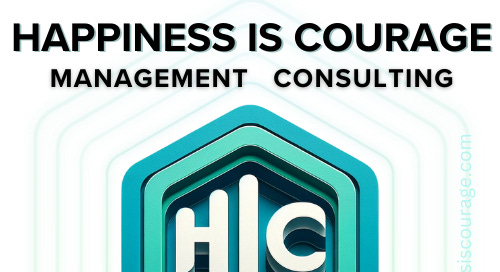If You Wouldn’t Trust a Volunteer With Your Finance Strategy, Why Do It With Well-being?
Strategic well-being demands expertise, because human health is organizational health.
Organizations often treat well-being programs as expendable luxuries, soft extras that vanish at the first sign of budget constraints. But what if well-being wasn’t just a nice-to-have? What if it was as critical to your organization's success as your sales, financial, or marketing strategies?
Spoiler alert: It is, even if you’re not framing it that way currently.
And yes - we have the numbers to back this up. Longitudinally, even. Gallup research consistently underscores the profound impact of employee well-being on organizational performance. For starters, companies with high levels of employee well-being experience 41% fewer quality defects, 48% fewer safety incidents, and up to 81% lower absenteeism. Those aren't just feel-good metrics, they're bottom-line game-changers.
And there’s more where that came from. Here are some links to explore if you need to create a business case for your stakeholders (or shareholders… I get it!)
Gallup: State of the Global Workplace (2025)
Globally, 50% of employees are looking for a new job. Have you calculated your turnover costs lately? Make sure you’re sitting down when you do…World Health Organization (WHO): Mental Health in the Workplace
Depression and anxiety cost the global economy over $1 trillion in lost productivity each year.Deloitte: Mental Health and Employers: The Case for Investment
Average ROI of £5 for every £1 spent on mental health and wellbeing interventions.McKinsey & Company: Working Nine to Thrive
Holistic well-being approaches are directly tied to increased retention, performance, and innovation.Harvard Business Review: Why Workplace Well-Being Programs Don’t Achieve Better Outcomes
Most workplace well-being programs fail to deliver meaningful outcomes because they focus on superficial perks rather than addressing the core drivers of employee stress, workload, and culture.American Psychological Association (APA): Work in America Survey (2025)
A psychologically healthy workplace where employees feel respected, supported, and empowered is directly linked to improved performance, lower stress, and reduced turnover.
Yet, despite these compelling numbers, wellbeing initiatives remain vulnerable during economic downturns, frequently first on the chopping block when budgets tighten. This approach overlooks a critical truth: your people aren't just another line item. They are the irreplaceable asset powering every part of your organization.
Let’s put it plainly: would you leave your company’s 10-year financial strategy to someone with no financial expertise? Would you assign your sales and marketing plans to a volunteer committee as a developmental stretch? Of course not. You bring in specialists, subject matter experts, people with deep knowledge and experience in these areas, because you know strategic success depends on informed, intentional leadership.
So why is well-being treated any differently?
Too often, well-being programs are delegated as an afterthought, an extracurricular project instead of a core strategic lever. If you wouldn’t outsource your financial future to chance, don’t treat the well-being of your people like a side gig. It deserves the same rigor, expertise, and leadership as every other critical function, because it is every bit as essential.
Organizations that strategically invest in employee wellbeing aren't just being compassionate; they're being smart. They build resilience and loyalty within their teams, fostering a bulletproof culture capable of weathering market fluctuations and economic storms. Well-being becomes their competitive advantage, differentiating them clearly from competitors who neglect this essential strategy.
Prioritizing well-being is no longer optional; it is foundational. Intentional well-being strategies align deeply with operational excellence, directly influencing productivity, engagement, retention, and innovation. When well-being is strategically integrated and valued as highly as financial or marketing strategies, organizations unlock sustainable, long-term success.
Remember, markets will fluctuate, strategies will evolve, but the most powerful constant in your organization will always be your people. Invest wisely. Prioritize well-being, because organizational health begins and ends with human health.
Ready to get started? Begin by considering these foundational questions:
What aspects of well-being (physical, emotional, social, financial) currently receive the most attention in your organization?
Where are there gaps or opportunities to enhance your current approach?
How do you measure wellbeing outcomes today, and how could you strengthen these metrics?
Your people's well-being is your best strategy for enduring success. By elevating well-being into a core strategic pillar, you’re not just enhancing your organization's resilience. you’re redefining success itself. Imagine an organization energized by purpose, sustained by loyalty, and driven by collective innovation.
The evidence is clear: prioritize your people's well-being, and you create an unstoppable force that propels your bottom line and empowers your organization to thrive through any challenge. So… where are you going to start?




